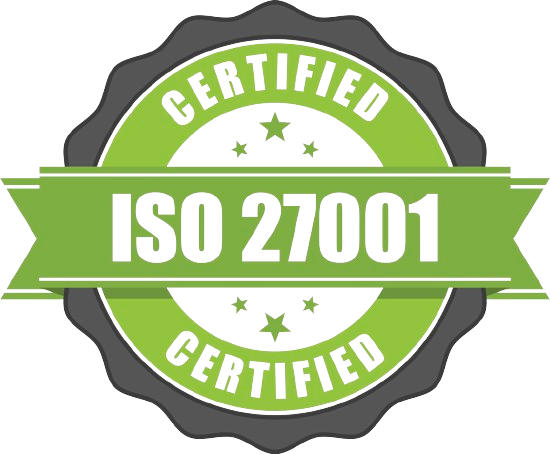The data economy in the United States has reached a defining moment.
In 2025, businesses are no longer just collecting data — they’re engineering, enriching, and visualizing it to drive daily decisions. From finance to entertainment, the demand for advanced data solutions has reshaped how organizations hire, collaborate, and innovate.
At our company, we’ve witnessed this evolution firsthand while working with clients across the U.S. — from Silicon Valley startups to East Coast enterprises — each leveraging data differently, but all seeking the same thing: clarity, control, and competitive advantage.
The New Data Economy: Where Engineering Meets Intelligence
According to IDC, the U.S. data services market surpassed $160 billion in 2025, growing at an average of 11% annually. This surge is powered by AI adoption, IoT infrastructure, and automation — all of which rely heavily on reliable data foundations.
More than 80% of enterprises have already scaled their data engineering and data warehousing systems to support AI-driven decision-making (Gartner, 2025). Another 68% of organizations work with data consulting agencies or engineering companies for ongoing analytics automation.
In this environment, data engineering experts, analysis specialists, and visualization developers have become the architects of modern business transformation. Whether it’s a financial analytics project in New York or an AI prototype in Austin, the underlying theme remains consistent: data is the new infrastructure.
Regional Strengths: How Local Expertise Shapes the National Data Network
Every U.S. region has developed its own strengths in data innovation.
While the West Coast dominates AI and automation, the East Coast leads with analytics precision — and the South drives scalability.
Innovation Corridors: AI and Cloud-Native Engineering
Regions like Silicon Valley and Austin have become hubs for data engineering companies specializing in real-time pipelines and automated orchestration. These teams focus on streamlining data flow across hybrid and multi-cloud environments.
Our own work with West Coast startups has shown that cloud-native data pipelines reduce latency by up to 34%, improving AI model accuracy and cost efficiency.
Financial & Compliance Analytics
New York, Chicago, and Boston continue to attract data analysis agencies and consultancies that specialize in compliance, forecasting, and governance.
Many of our enterprise clients here require deep expertise in risk analytics, data lineage, and regulatory compliance frameworks.
The financial sector alone contributes over $7.8 billion annually to the data governance market (IDC).
Media, Retail & Visualization Hubs
Los Angeles and Miami stand out for their data visualization companies that merge analytics with creative storytelling.
In one of our recent projects with a retail analytics firm, we saw how interactive BI dashboards increased stakeholder engagement by over 25%, turning static reports into actionable business insights.
Industrial & Energy Analytics
Texas and Colorado lead the way for data mining and data solution companies supporting energy, logistics, and manufacturing.
Predictive analytics in these industries has grown 3.2× since 2022.
We’ve seen first-hand how our data models have helped industrial clients cut unplanned downtime by nearly 18% through intelligent anomaly detection.
Each region’s strength contributes to a national ecosystem where data science services companies, visualization experts, and consulting agencies collaborate to build truly intelligent systems.
The Real Divide: Productized vs. Custom Data Services
As the market matures, data consultancies are diverging into two distinct models:
| Model | Approach | Common Clients | Example Use Case |
|---|---|---|---|
| Productized Services | Predefined ETL, analytics, and visualization modules | SMEs & startups | Fast BI deployment, dashboarding |
| Custom Engineering | End-to-end architecture and workflow automation | Enterprises & SaaS firms | Complex data lakes, ML pipelines |
Productized services offer speed and scalability — great for smaller teams looking for fast deployment.
Custom solutions deliver depth and precision — ideal for organizations with unique data challenges.
At our firm, we balance both. We’ve developed modular data solutions that can plug into existing systems while still providing the custom engineering depth that modern businesses need.
The Human Factor: Specialists, Contractors & Freelancers
Behind every successful data ecosystem lies an expert workforce.
In 2025, nearly 37% of U.S. data professionals operate as independent specialists or contractors (LinkedIn Workforce Report, 2025).
These experts play vital roles in flexible, hybrid teams — blending the stability of a data agency with the agility of freelance data visualization or crawling developers.
We’ve successfully integrated hybrid delivery teams where data engineering freelancers work alongside our in-house consultants — cutting project timelines by up to 40% without sacrificing quality or security.
Whether you work with a data engineering company or independent consultants, the real success comes from team synergy — not structure.
Data Infrastructure Intelligence: The Backbone of Every Data Operation
While analytics gets most of the spotlight, data infrastructure quietly determines whether those insights even exist.
Poor database management accounts for 74% of cloud security breaches (IBM X-Force, 2024).
That’s why Data Base Administration (DBA) companies and engineering specialists are increasingly integrated into consulting ecosystems.
At our end, every large-scale data solution we deliver includes active data monitoring, schema optimization, and cloud redundancy, ensuring 99.99% uptime across production environments.
For modern enterprises, reliability isn’t optional — it’s engineered.
Data Crawling & Enrichment
Most organizations underestimate the value of data crawling companies — the teams responsible for gathering the raw web and API data that powers machine learning and market intelligence.
Today, over 55% of U.S. retail intelligence systems depend on custom crawling and enrichment frameworks (BuiltWith, 2024).
We’ve helped clients develop AI-led crawlers that don’t just scrape — they contextually enrich data for precision targeting, product matching, and sentiment analytics.
This often becomes the hidden layer behind the success of visualization or recommendation systems.
When Data Feeds Design
Analytics only works if people understand it.
That’s where data visualization specialists and developers come in — transforming complex datasets into interactive stories.
In industries like media, e-commerce, and sports, real-time dashboards and visual reports increase decision adoption by 27% (Tableau Pulse, 2025).
Our visualization experts have designed interfaces where non-technical users can interact with multi-layered data — without losing narrative clarity.
Data storytelling isn’t an add-on anymore; it’s how decisions get made.
Trust, Compliance & Partnership: The Real Differentiators
In a crowded market of data consulting agencies and solution companies, credibility matters.
The best firms differentiate themselves through:
-
SOC 2, ISO 27001, or HIPAA compliance
-
Transparent audit trails
-
End-to-end data encryption and governance
We’ve aligned our internal delivery framework with these standards to ensure every client solution meets enterprise-grade compliance — particularly for finance, healthcare, and government sectors.
Economics of Data Partnerships: What Businesses Are Really Paying For
According to Clutch’s 2024 industry survey:
| Type | Average Project Value | Ideal For | Primary Expertise |
|---|---|---|---|
| Data Engineering Company | $50K–$500K | Large enterprises | Pipeline automation, MLOps |
| Data Agency | $10K–$100K | Mid-size firms | BI dashboards, ETL |
| Freelancers / Contractors | <$10K | Startups | Visualization, data crawling |
When we design project scopes, our goal isn’t just pricing — it’s efficiency.
By blending agency-scale architecture with contractor-level agility, we ensure measurable ROI and technical accountability in every project.
The Road Ahead: How the Data Ecosystem Is Evolving
The next three years will redefine what data services mean.
Gartner forecasts an 11.4% CAGR in U.S. data service adoption through 2028.
Emerging trends include:
-
Data-as-a-Service (DaaS) becoming standard for enterprises
-
Integration of Generative AI with analytics pipelines
-
Rise of real-time data visualization companies supporting cross-functional decision-making
Our ongoing work with automation-first enterprises shows that integrating AI-driven data models early reduces long-term data engineering costs by nearly 20%.
Partner With Us: From Data Chaos to Business Clarity
The future belongs to businesses that don’t just collect data — they orchestrate it.
Our teams combine:
-
Data engineering for structure
-
Data analysis for insights
-
Data visualization for clarity
-
Big Data consulting for scale
Whether you’re refining analytics in Boston, deploying cloud pipelines in San Francisco, or visualizing business intelligence in Miami — our goal remains the same: to make data usable, measurable, and growth-driven.
Let’s build your next data success story.
Q1. What’s driving the growth of data engineering in the U.S.?
AI adoption, cloud migration, and real-time analytics are pushing demand for data engineering companies and consultancies across industries.
Q2. How do visualization agencies help non-technical teams?
By converting complex datasets into interactive dashboards — helping teams make faster, visual-first decisions.
Q3. Should startups work with freelancers or agencies?
Freelancers are excellent for rapid MVPs, while agencies and consultancies offer reliability for scaling and compliance. We often build hybrid models combining both.
Q4. What defines a good data partner?
Transparency, compliance, and measurable ROI — not just tech stack knowledge. Always choose partners who can demonstrate real impact with verifiable metrics.







